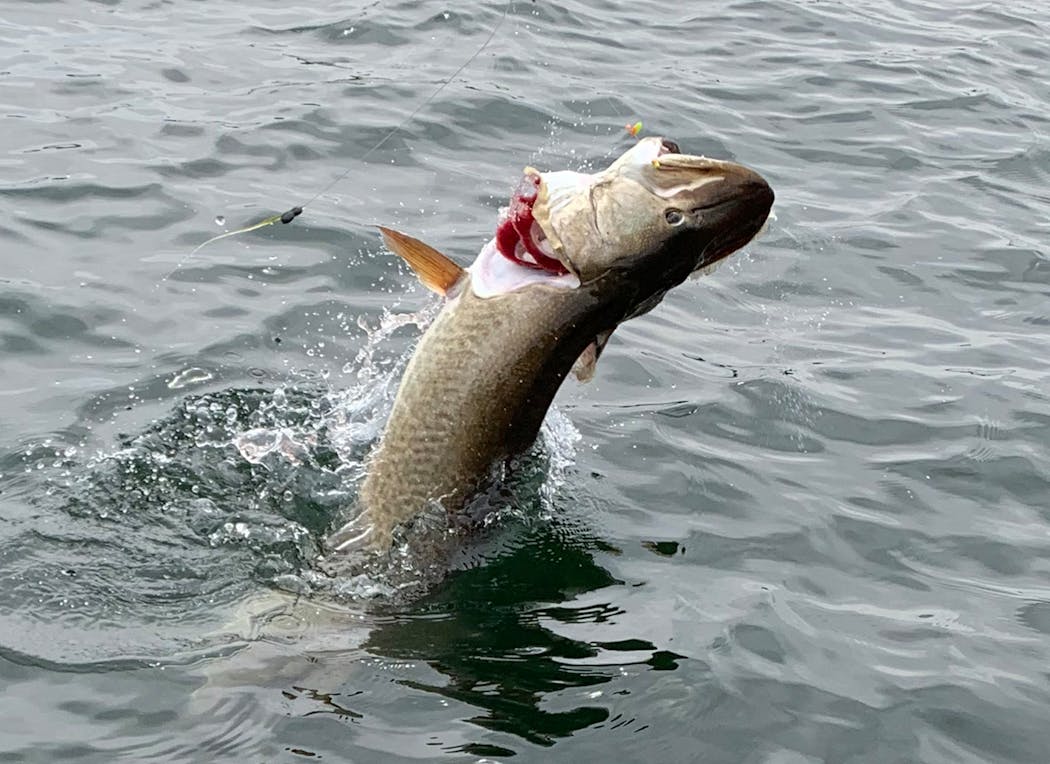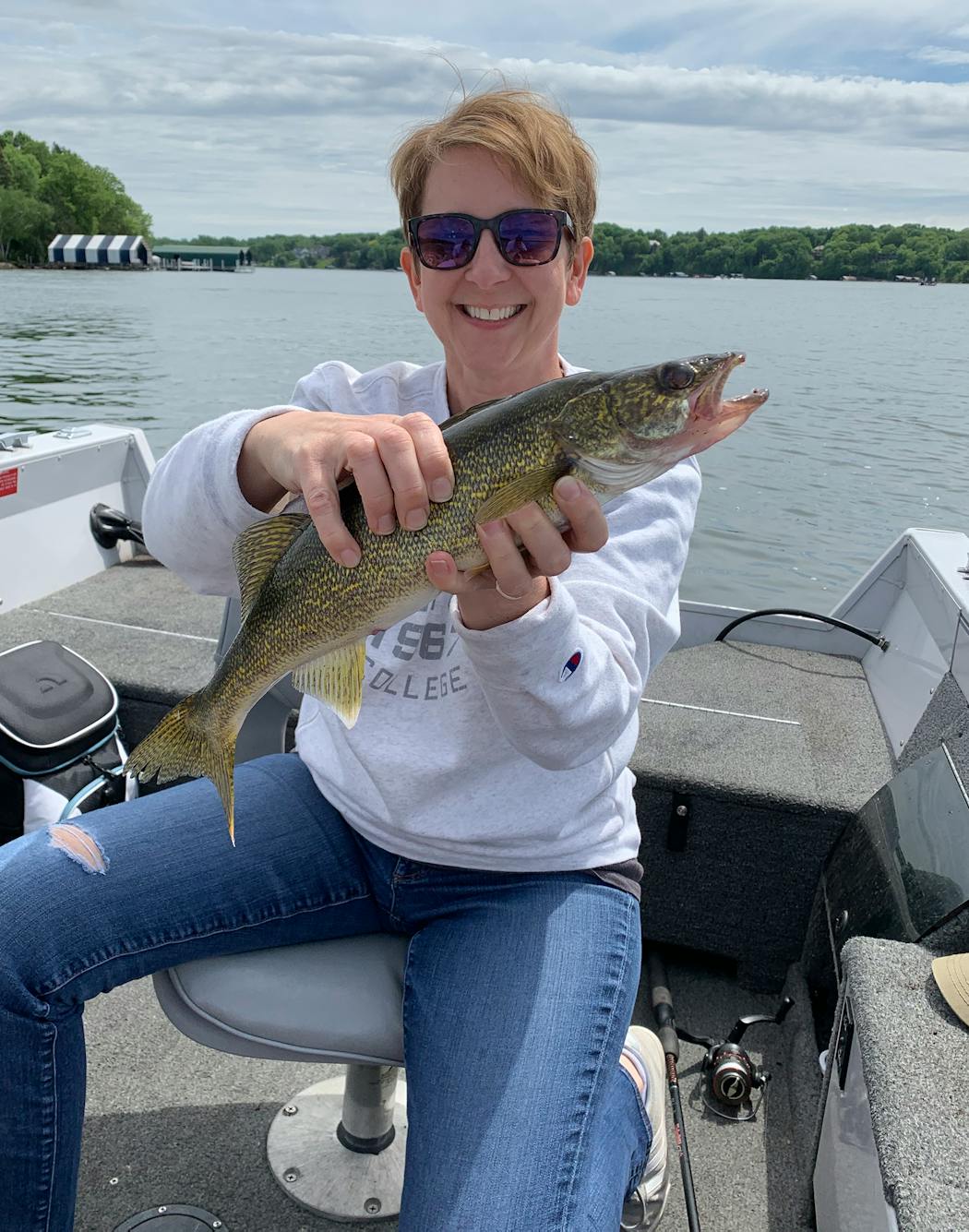In Herman Melville's "Moby-Dick,'' the antagonist, Ahab, is so fixated with pursuing the great white whale of the book's title that Ahab's obsession results in his demise, and not in a pleasant way.
Though invoking timeless questions about man's futile attempt to conquer nature, the tale, on its face, is simple enough, and — to this day — is often repeated.
Sometimes the fish wins.
But not always.
Paul Schiller and his wife, Rachel Daly, of Minneapolis were on Lake Minnetonka last Saturday, and can attest to it.
Unlike many weekend recreationists on that 14,000-acre lake, they were not astraddle Jet Skis or at the wheel of a wake boat. Instead, they were in their 16-foot Crestliner, fishing rods in hand, dragging nightcrawlers.
"I fish every weekend,'' said Schiller, 52, an engineer. "If I'm not in my boat, I like to fish from shore, beneath dams. I'm almost always looking for walleyes. Never for muskies.''
Yet when Schiller and Daly departed the metro's largest lake a week ago, it wasn't the three keeper walleyes they caught that memorialized the excursion.
Rather it was a 52-inch muskie they also landed that rendered the outing unforgettable — a trophy of a lifetime they boated after catching a 21-inch walleye affixed to another hook on the same nightcrawler harness.
Muskie guide Josh Stevenson of the Twin Cities pursues Minnesota's toothiest fish 120 days or more a year. He's never heard of such a thing.
"First, to get a muskie to eat a worm almost never happens,'' Stevenson said. "Second, to land a walleye on a separate hook on the same harness, that doesn't happen, either. Ever.''
Schiller and Daly already had two Minnetonka walleyes in their live well when Schiller's line drew tight about 2 p.m. last Saturday. He didn't know what he had hooked. But it was hefty, and it stayed deep.
"Five minutes or so passed before I got the fish close enough to the surface to see it was a muskie,'' Schiller said. "I had only 8-pound-test line, so I loosened the drag on my reel. I didn't want to put too much pressure on her.''
The Department of Natural Resources (DNR) has monitored Lake Minnetonka's fish populations since 1949. Muskies were first stocked in the lake in 1974, and in the years since, a reasonably good population of Esox masquinongy has flourished in Minnetonka — a word that, translated from the original Dakota, means "great water.''
For anglers, Minnetonka is just that — great. One of the best largemouth bass lakes in the state, Minnetonka also holds healthy panfish populations. Additionally, its walleyes are often pursued successfully by those who know the lake and how to fish its milfoil, particularly in spring and early summer, and in fall.
That said, many anglers who regularly cast for muskies in Minnetonka believe their numbers have fallen in the lake over the past decade or so.
It's possible also that 'Tonka's muskies have become increasingly close-mouthed due to heavy angler pressure.
Either way, a DNR gill net survey in 2019 yielded only two muskies with an average weight of 23 pounds, a sizable difference from the estimated 45 pounds Schiller's 52-incher weighed.
"When we saw the muskie near the surface we didn't realize it had a walleye in its mouth,'' Schiller said. "We didn't see the walleye until we got the muskie close enough to the boat and my wife tried to get its head into our walleye net. As she did, the walleye, which had one of the harness's hooks in its mouth, dropped into the net, breaking the hook as it did. Amazingly, for being in the muskie's mouth, the walleye had only a little scuffing on its sides, but no lacerations.''
Added Schiller: "When the walleye dropped into the net, Rachel was like, 'Where did that come from?''
Attempting again to escape, and diving, the muskie was tethered to Schiller by the third hook on the harness — two back from the hook that snared the walleye.
Hoping to maneuver the big fish alongside the boat, Schiller believed he might be able to reach beneath it, cradle it in his arms, and lift it over the Crestliner's gunwale.
"When we finally got the muskie next to the boat, we could see she had the bottom hook of the nightcrawler harness in the corner of her mouth,'' Schiller said. "I couldn't get the hook out while the muskie was in the water, so Rachel supported its head in the net while I got one hand under its belly and the other under its tail and lifted it into the boat.''
Their intent with the muskie was far more benevolent than Ahab's was with Moby-Dick.
Ahab, Melville wrote in 1851, wanted to chase "that white whale on both sides of land . . . . till he spouts black blood and rolls fin out.''
Said Schiller, "We just wanted to get the muskie unhooked and release her. Which we did. I revived her for a bit when we got her back into the water, and she swam away strongly.''
Asked if anyone from Minnetonka's Saturday afternoon Jet Ski and wakeboard crowd gathered to watch the struggle that produced such a magnificent fish, and memory, Schiller said no.
"They didn't seem to notice,'' he said.
Anderson: Anglers protesting tough new Mille Lacs rules are wrong

Anderson: Courts, not politicians, should rule on Red Lake, White Earth lands

Anderson: Multimillion windfall gets invasive carp deterrent moving
![A young whitetail deer searches for food as another blanket of snow coats the arrowhead. ] Minnesota -State of Wonders, Arrowhead in Winter BRIAN PETE](https://arc.stimg.co/startribunemedia/WK32UWWY6FKNWJUIYCJ6ZPT4AU.jpg?h=91&w=145&fit=crop&bg=999&crop=faces)
Anderson: In NE Minnesota, DNR staff, habitat and deer all decline





